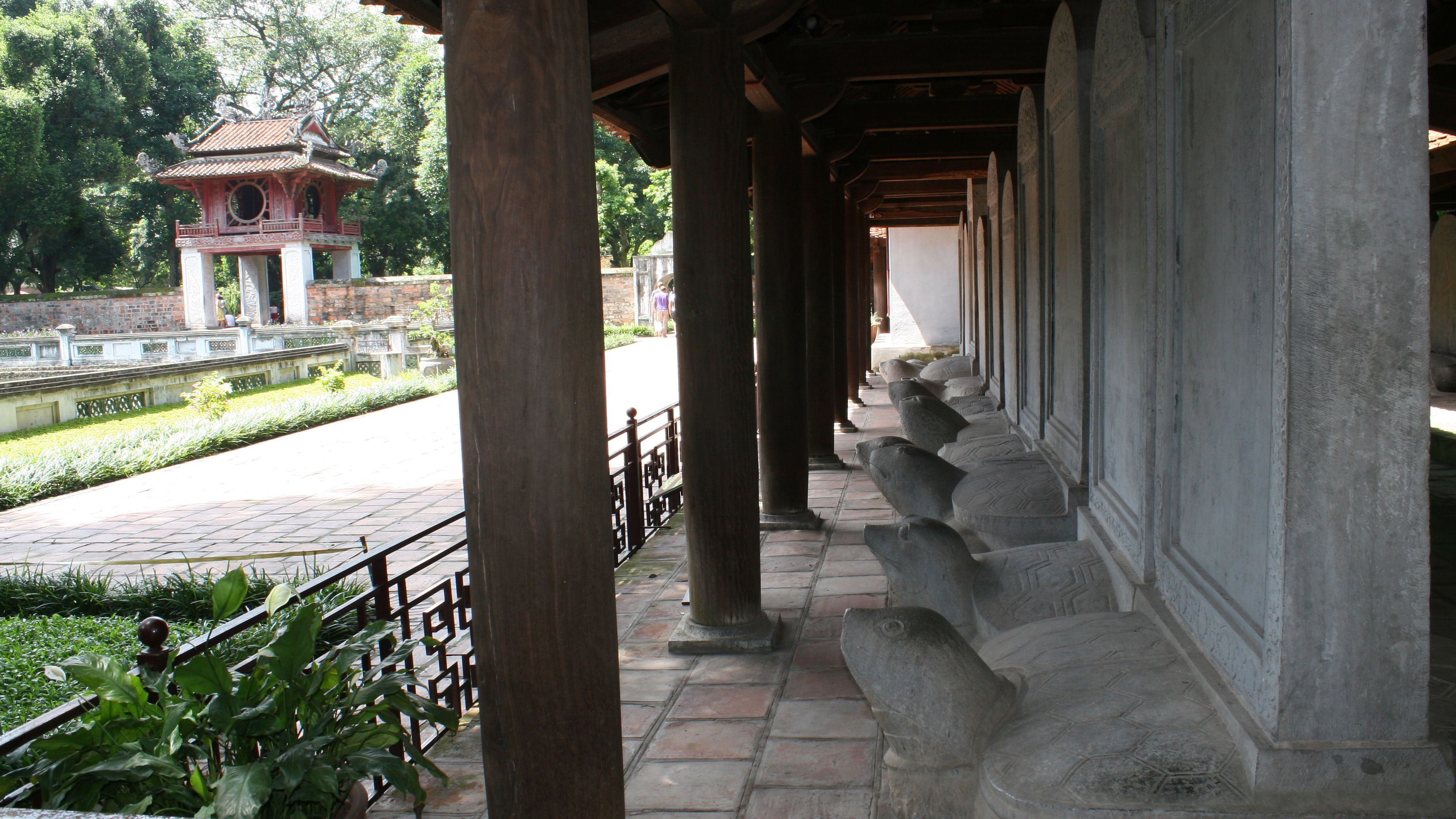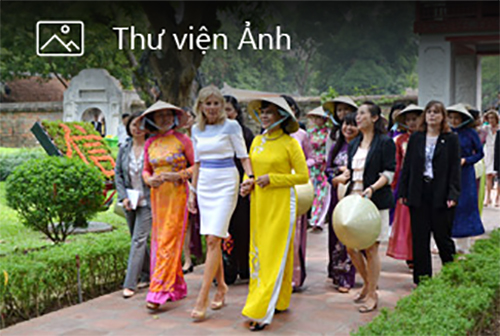THE STONE STELAE – A WORLD DOCUMENTARY HERITAGE
On January 14, 2011, 82 stone stelae were regconized as a national treasure. In May 2011, the 82 stone stelae at Van Mieu – Quoc Tu Giam were ranked as a world documentary heritage. Le Thanh Tong King (1460 – 1497) thought highly of Confucianism and ordered stone stelae to be erected to memorialize the nation’s talents.
Nowadays, 82 stone stelae from 15th to 18th centuriesrecord the names of 1304 doctoral laureates. These 82 stone stelae are original and havve beenpreserved.
Original and unique
The 82 stone stelae are original artifacts found only at Van Mieu – Quoc Tu Giam in Hanoi. They provide an opportunity to researchthe connected relationship between geography and the history of culture in Vietnam.
The 82 stone stelae are a precious textual source of history that helps us research the life and careers of Vietnamese talents and provideso a complete list of graduates in Han – Nom bibliographies of Vietnam.

(Photo: Western houses of stone stelae)
More specifically, each inscription provides information on the history of the examination and the political and social context of the Viet kingdom during that period by singing the praises of talented men and the virtues of the ruling monarch and outlines the purposes and requirements of the education system. The inscription for the examination held in 1442 says: “Virtuous and talented men are the primordial vitality of a State. If this vitality is strong, the State will be powerful and prosperous. If it is not, the State will weaken and have a low standing. Therefore, clear – sighted monarchs always attach importance to educating talented men and selecting Confucian scholars for the mandarinate, and regard the fostering of the State’s primordial vitality as an urgent task”.
Diversity of value of source text
Content of inscriptions on 82 stone stelae have been researched and identified many subjects: history, culture, education, philosophy, law, comtemplary written language...
The inscription on each stelae, speaks highly of the role of Confucianism in social-political life and the king. In the past, the kings always cared and respected the talents who are considered the most important factors to consolidate the country, and rule the nation.
History of education in Vietnam is evident on the 82 stone steale. The steale illustrate the rule of education, the names of exams (Hoi, Dinh exams) and the tittles of doctoral laureates with their ranks: the first rank (Trang nguyen, Bang nhan, Tham hoa); the second rank (Hoang giap); the third rank (Tien si).
The 82 stone stelae were engraved in Han character, important characters that provides research of the history of development of Han character from 15th to 18th centuries.The earliest stone stelae are inscribed with seal character, reflecting traditional creation of calligraphy in Vietnam.

(Photo: The seal characters show the examination held in 1589)
Diversity of form and style
The 82 stone stelae were erected in different dynasties, which is evident by three different shapes of tortoise. Each stelae has its own artistic character, represented by the design of the tortoise or pediment and edges, which reflects the artistic symbolism of the times and thus sheds light on the development of Vietnamese art history during the 15th and 18th centuries. Every steale is a real work of art, having been created by the best scholars, craftmen and calligraphers of the era.

(Photo: The stone stele for exam held in 1448)
Stone stelae at Van Mieu – Quoc Tu Giam record events of politics, culture and science. The development of education policy was important to develop a strong nation.
Translator: Bich Phuong














 Guide to finding the way
Guide to finding the way
